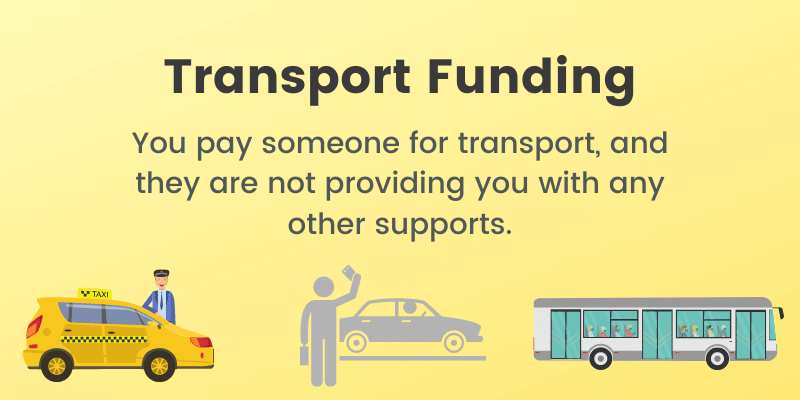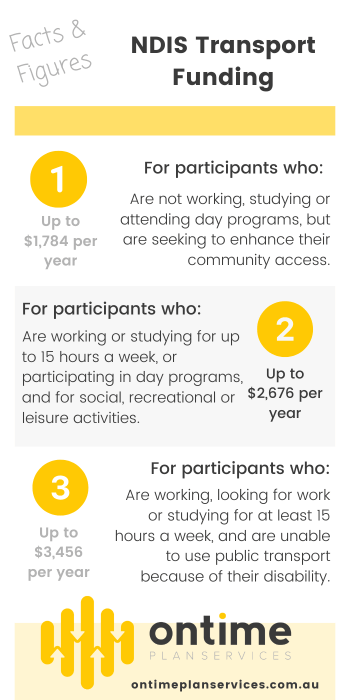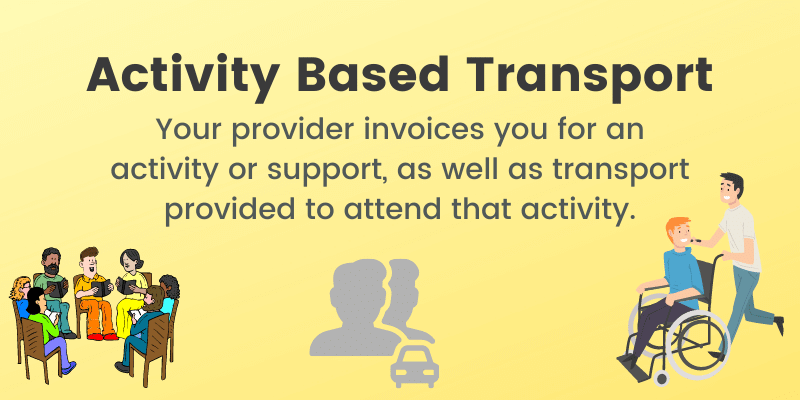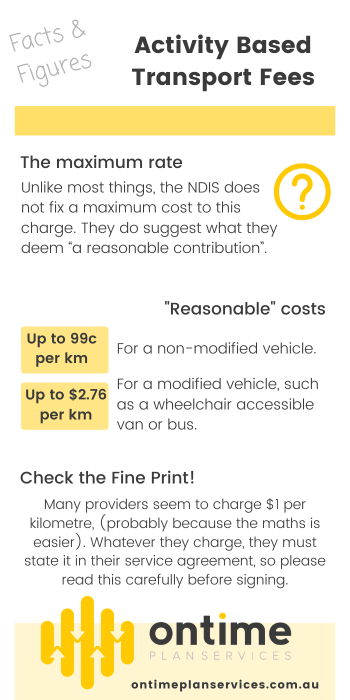The NDIS pays for different transport supports for participants and providers. Unfortunately, the words ‘travel’ and ‘transport’ can get confusing.
In this article (Part 1) we look at transport payments and how each of them work. Part 2 looks at the rules for provider travel.
Before we go any further – the NDIS likes to change things up a lot. Always follow the links and check the NDIS website for the latest rules and prices. Now, read on!
Transport Funding

At some stage, we all need transportation to get from one place to another. The NDIS funds transport assistance if you cannot use public transport “without substantial difficulty due to your disability”. It helps pay for transportation to access your community and take part in social activities.
An example may be to pay for a taxi to the shopping centre or a community bus to a coffee shop to meet friends. This is where someone (like a taxi or Uber driver) transports you, but is not providing paid care or support to you.
There are two ways Transport funding can be provided:
-
Paid into your bank account every fortnight. It is then up to you to manage that money. You cannot claim any more money than what you are getting paid. For example, if the rest of your plan is plan managed, your plan manager can’t reimburse you for Taxi fares.
-
A lump sum in your plan. This is then claimed the same way as the rest of your plan. If you have a plan manager, they can reimburse you for Uber trips, or pay a Taxi company invoice. If your Core funding is flexible, funds from one area can be moved to another, as needed. So if you need more Transport funding, you can ‘borrow’ it from another category. If you don’t need it all, you can put it towards another Core category.

Activity Based Transport


Sometimes you might attend an activity with your support worker, who is also driving you in their car. Or perhaps you’re going on an excursion organised by a local provider, who is picking you up with their bus. In these cases, this is not Transport Funding, but Activity Based Transport. Confused? You’re not alone!
Let’s say a disability provider offers a group outing to the local bowling alley. They charge under your Social and Community Participation budget for the support. They also pick you and other participants up in their bus and bring you home again afterwards. This is Activity Based Transport – the support and transport are from the same provider.
The same applies if a support worker drives you somewhere in their car, and stays to support you. Say your support person is picking you up, takes you shopping and then takes you home again. That is also Activity Based Transport.
Activity Based Transport only applies if you are being supported by someone, and they are also driving you. A taxi driver is not providing you support – they are providing you with transport.
Did you know?
Your provider can charge for the time driving you, as well as the support time. For example, your support worker takes you to a medical appointment which takes one hour. They drive you there and back, which takes half an hour. Your provider invoices for 1.5 hours to cover the time for the appointment, and the driving.
If they charge you a cost per kilometre traveled, that’s the Activity Based Transport charge. It has to be invoiced separately, but comes from the same budget as your support.
If it’s a group outing, the provider has to split the charges. So if there were four people being transported, the costs would be split four ways.
Providers need to discuss these charges with you beforehand. Most of the time, this will be in their service agreement. If you’re not sure, ask them!
To wrap it up
Activity Based Transport = kms charged by someone providing paid support during the transport.
Transport = charges for being driven by someone who is not your support person. Think taxi driver!
Transport funding comes from a different budget than Activity Based Transport.
Once you’ve got the hang of Participant Transport, check out Part 2 to unravel the mystery of Provider Travel!

